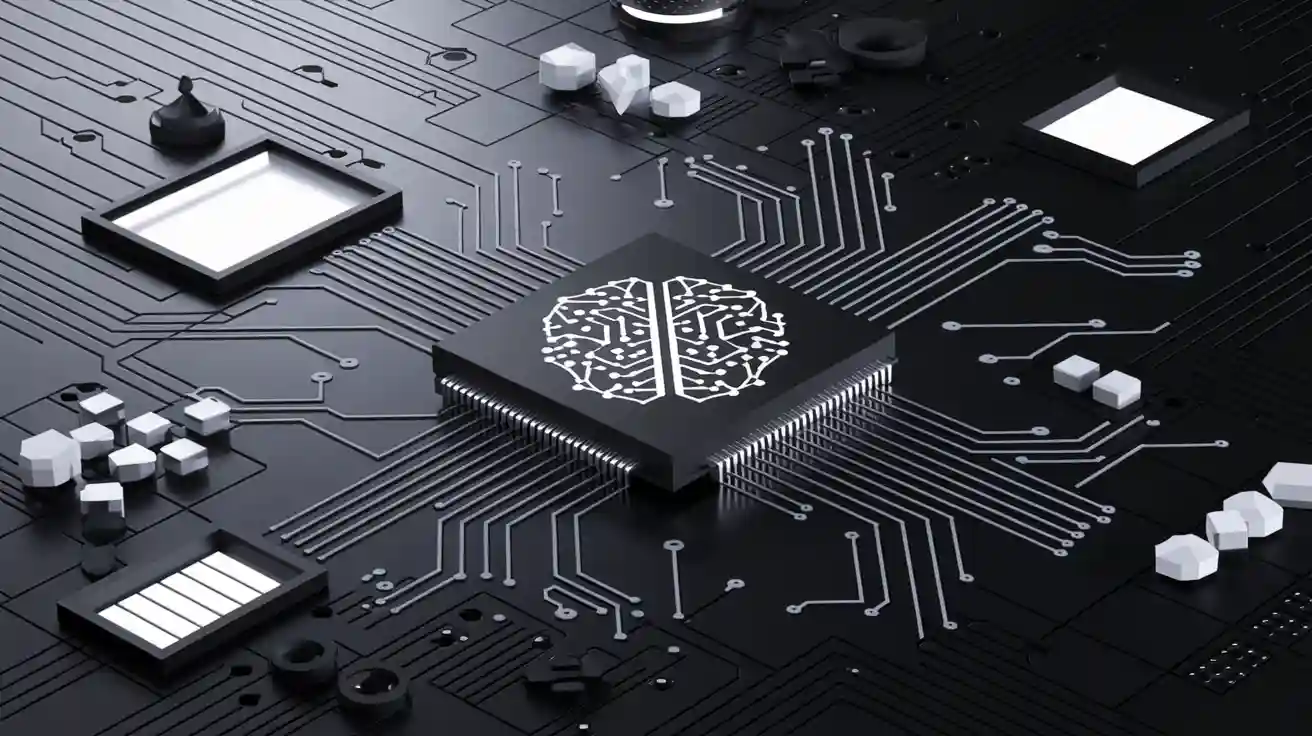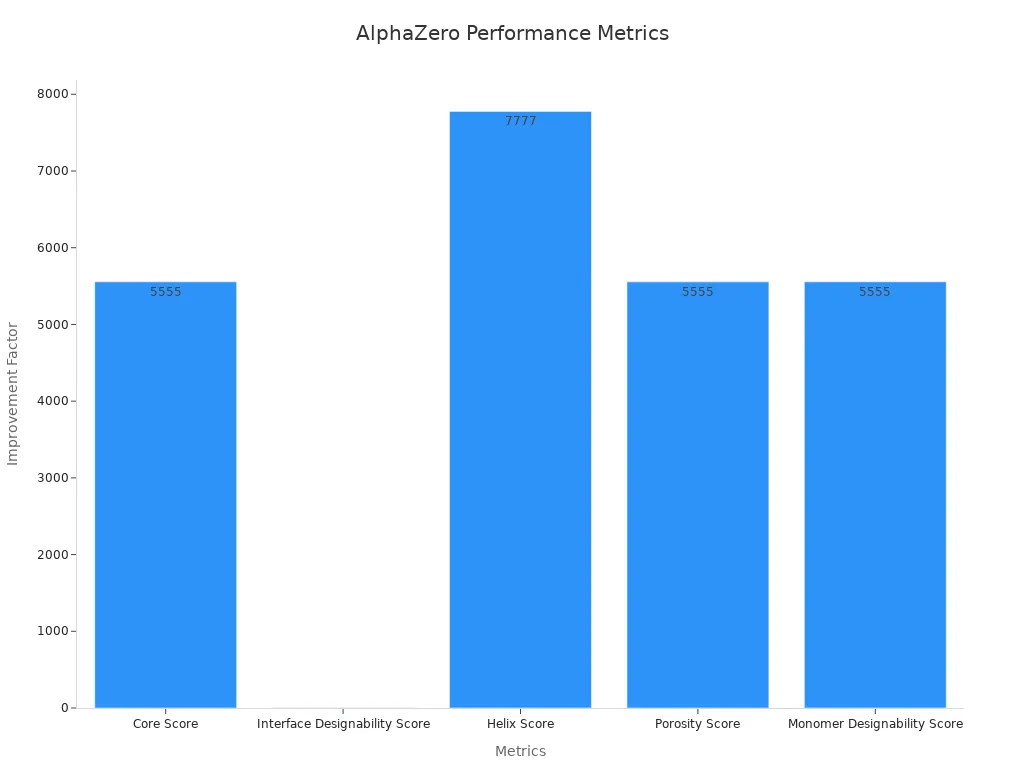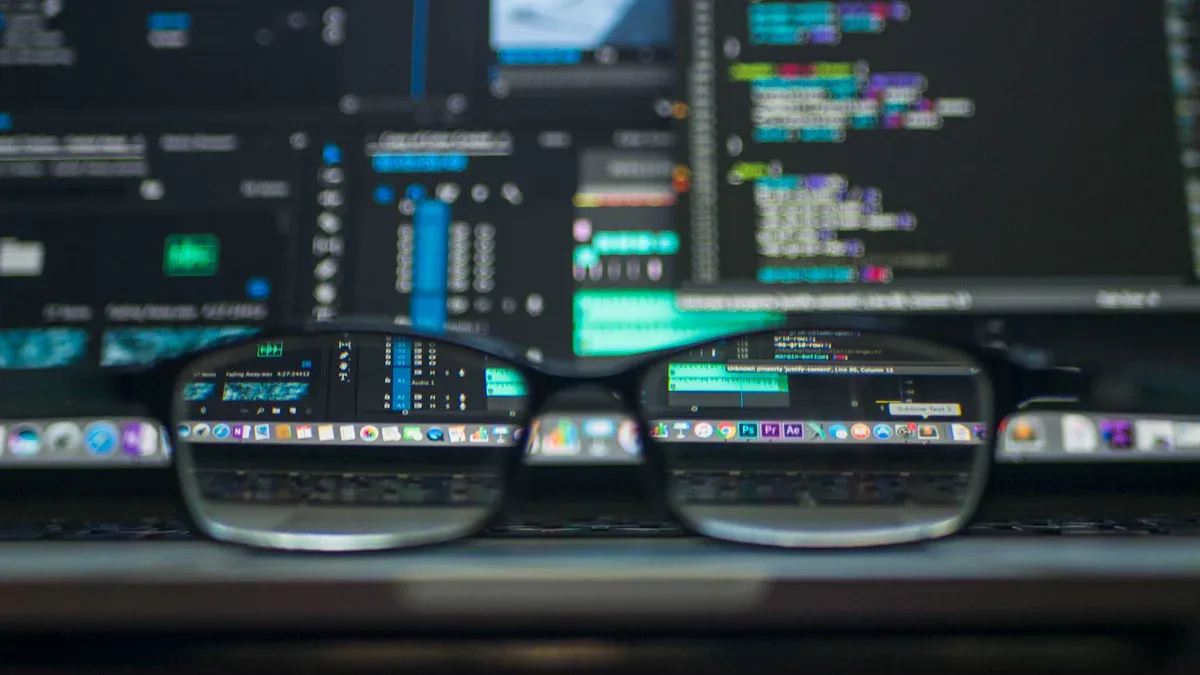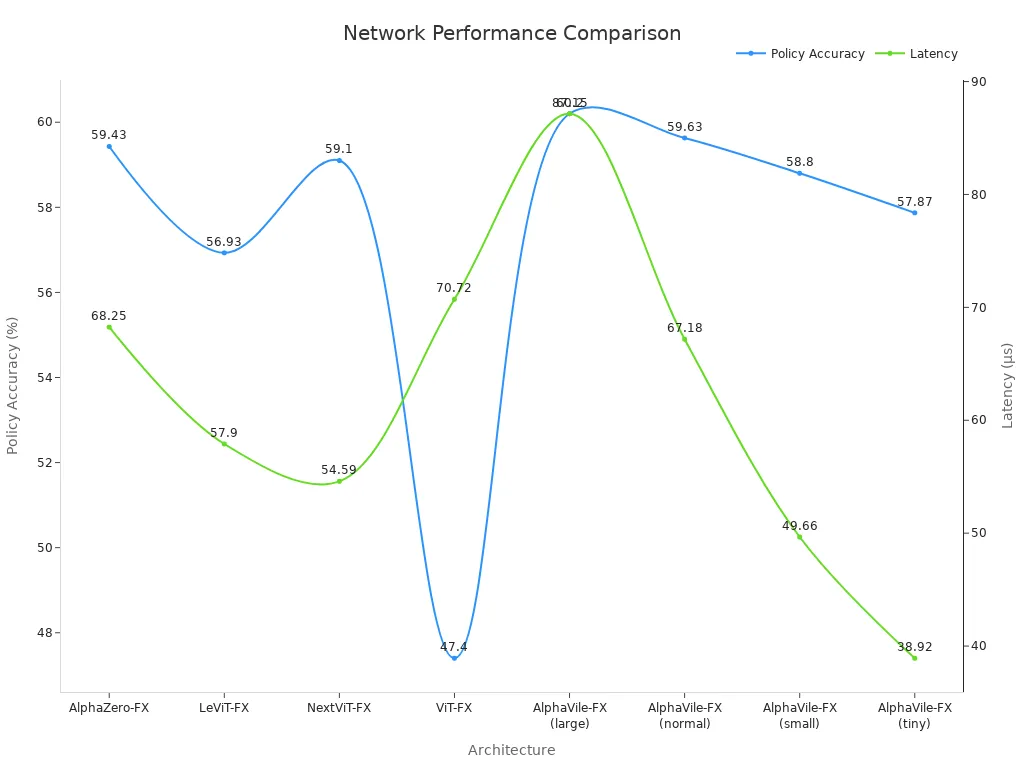
The alphazero machine vision system describes a new approach for computers to understand images by using ideas from alphazero. Although alphazero does not act as a machine vision system, its methods inspire researchers. Alphazero uses self-play and reinforcement learning, which help computers learn better strategies. In artificial intelligence, the alphazero machine vision system means using alphazero’s learning style to teach machines how to see and make decisions about pictures. Many scientists now use alphazero to develop smarter vision systems.
Key Takeaways
- The AlphaZero machine vision system teaches computers to see and understand images by learning on their own through self-play and trial-and-error.
- This system uses reinforcement learning to improve by rewarding correct decisions and learning from mistakes without needing many labeled images.
- AlphaZero-inspired vision systems plan their actions using Monte Carlo Tree Search, helping them make better choices in complex visual tasks.
- These systems differ from humans by discovering knowledge through practice instead of relying on fixed rules or past experience.
- AlphaZero machine vision helps in real-world areas like robotics, healthcare, and security, but it still faces challenges with abstract thinking and complex images.
AlphaZero Machine Vision System
Definition
The alphazero machine vision system describes a new way for computers to see and understand images. This system does not use the original alphazero as a direct tool for vision. Instead, it takes the learning style and strategies from alphazero and applies them to visual tasks. Alphazero became famous for learning to play games without human help. Researchers now use its methods to help machines learn how to look at pictures and make choices. The alphazero machine vision system uses self-play and trial-and-error learning. These ideas help computers get better at recognizing objects and scenes. The system does not follow fixed rules. It learns by practicing and improving over time. This approach stands out in the field of ai and artificial intelligence because it lets machines teach themselves how to see.
Note: The alphazero machine vision system does not copy alphazero exactly. It borrows the main ideas and changes them for vision tasks.
Key Features
The alphazero machine vision system brings several important features to ai:
-
Self-Play Learning
The system learns by practicing on its own. It creates challenges and solves them without outside help. This method helps the system improve quickly. -
Reinforcement Learning
Alphazero uses rewards to guide learning. The machine gets points for correct answers and learns from mistakes. This process helps the system find the best ways to solve vision problems. -
No Need for Labeled Data
Many vision systems need lots of labeled pictures. The alphazero machine vision system can learn with fewer labels. It explores and discovers patterns by itself. -
Flexible Decision-Making
The system does not follow a set path. It tries different actions and picks the best one. This flexibility helps it handle new and changing images. -
Monte Carlo Tree Search
Alphazero uses a special search method to plan its moves. In vision, this helps the system look ahead and choose the best steps to understand an image.
| Feature | Description |
|---|---|
| Self-Play | Learns by practicing without human input |
| Reinforcement Learning | Uses rewards and penalties to improve |
| Few Labels Needed | Learns with less labeled data |
| Flexible Decisions | Adapts to new situations |
| Monte Carlo Tree Search | Plans steps to solve vision tasks |
The alphazero machine vision system changes how ai approaches vision. It does not rely on old methods. Instead, it uses alphazero’s powerful learning style. This system helps computers become better at seeing and understanding the world.
AlphaZero vs. Humans
Decision-Making
AlphaZero and humans approach decision-making in very different ways. AlphaZero uses a layered process inside its neural network. The final layers focus on short-term planning, such as end-game moves. The middle layers handle long-term strategies. Monte Carlo Tree Search helps alphazero discover new strategies before its neural network fully learns them. This step-by-step learning process stands out from how humans think.
Humans often rely on experience and intuition. They use past lessons to make quick choices. In contrast, alphazero tests many possible moves and learns from each outcome. This method allows alphazero to improve its decision-making over time without needing human advice. In ai, this approach helps machines solve problems in new ways.
AlphaZero starts with no knowledge of the task. It explores all options equally at first. Over time, it narrows down the best choices by learning from practice.
Structured Knowledge
Humans build structured knowledge through teaching and experience. They learn rules and patterns early, such as the value of chess pieces. For example, most people learn that a queen is worth nine points and a pawn is worth one. Alphazero, however, develops these values during training. Its piece values slowly move toward the classic human values as it learns.
The table below shows some key differences between alphazero and human learning:
| Aspect | AlphaZero Behavior | Human Structured Knowledge Processing |
|---|---|---|
| Piece Value Evolution | Piece values change during training, moving toward human-like values | Learns fixed values early |
| Concept Importance Over Time | Focus shifts from material to subtle ideas like mobility and safety | Emphasizes material and then adds positional ideas |
| Opening Move Preferences | Starts with all moves, then narrows down choices | Prefers certain moves early, then explores more over time |
| Material Imbalance Evaluation | Starts like Stockfish, then creates its own system | Uses stable, classic values |
| Concept Learning Detection | Learns concepts through practice and network changes | Gains concepts through teaching and experience |
Alphazero-inspired ai systems show a unique way to build knowledge. They do not follow a set path. Instead, they discover patterns and rules through self-play and trial-and-error. This process leads to a different kind of structured knowledge than what humans develop.
Core Mechanisms
Reinforcement Learning
Reinforcement learning forms the heart of the alphazero machine vision system. This method allows the system to learn by trying actions and receiving feedback. The system gets rewards for correct choices and learns from mistakes. Over time, it improves its ability to solve visual tasks. Alphazero uses this approach to teach itself how to see and understand images. The system does not need many labeled pictures. It explores and finds patterns on its own.
Researchers have measured how well reinforcement learning works in alphazero-inspired systems. In benchmark tests, alphazero outperformed other methods like Monte Carlo Tree Search alone. The table below shows how much better alphazero performed on several tasks:
| Metric | Improvement Factor (AlphaZero vs MCTS) | Statistical Significance (p-value) |
|---|---|---|
| Core Score | ~5555 times better | Wilcoxon Rank-Sum test |
| Interface Designability Score | ~1.8 times better | Wilcoxon Rank-Sum test |
| Helix Score | ~7777 times better | Wilcoxon Rank-Sum test |
| Porosity Score | ~5555 times better | Wilcoxon Rank-Sum test |
| Monomer Designability Score | ~5555 times better | Wilcoxon Rank-Sum test |

These results show that alphazero learns faster and more effectively than older ai methods. The system also adapts well to new tasks. During training, alphazero with extra goals reached higher rewards than the original version. This proves the strength of reinforcement learning in visual perception.
Monte Carlo Tree Search
Monte Carlo Tree Search (MCTS) helps alphazero plan its actions. The system uses MCTS to look ahead and choose the best steps. This process improves decision-making in vision tasks. MCTS works by simulating many possible moves and picking the most promising ones.
Key roles of MCTS in alphazero-inspired ai systems include:
- Win rate against random opponents increases as the agent learns better strategies.
- Training loss drops as the neural network predictions match MCTS-guided choices.
- Tracking wins, losses, and draws shows the agent’s growing skill.
- Self-play games with MCTS create high-quality data for training.
- Visualizing each move helps researchers see how strategies improve.
MCTS and reinforcement learning together make alphazero a powerful tool for ai vision. These core mechanisms help the system learn, plan, and adapt in complex environments.
Applications

Navigation
The AlphaZero machine vision system helps computers and robots move through spaces. This system learns how to find the best path from one place to another. It does not need a map made by humans. Instead, it explores the area and learns from each step. The system uses self-play to test different routes. It rewards itself for reaching the goal and learns from mistakes.
Robots use this system to avoid obstacles. They look at their surroundings and decide where to go next. For example, a robot in a warehouse can find boxes and move around them. It does not follow a fixed path. The robot tries new ways and picks the safest route. This method works well in places that change often.
Tip: The AlphaZero machine vision system can help self-driving cars. The car learns to see roads, signs, and other cars. It makes quick decisions to stay safe.
Other Use Cases
The AlphaZero machine vision system also works in many other fields. In healthcare, computers use it to look at medical images. They learn to spot signs of disease without needing many labeled pictures. Doctors get help finding problems faster.
In manufacturing, machines use this system to check products for defects. They learn what a good product looks like and spot mistakes. This helps companies make better items.
Here are some more examples:
- Drones use the system to fly safely and avoid trees or buildings.
- Security cameras learn to spot unusual activity.
- Video games use it to create smarter computer players.
| Field | Example Application |
|---|---|
| Healthcare | Disease detection in images |
| Manufacturing | Quality control in factories |
| Security | Unusual activity detection |
| Entertainment | Smarter game opponents |
The AlphaZero machine vision system gives computers new ways to learn and solve problems. It helps many industries work better and safer.
Challenges and Future
Abstraction Limits
AlphaZero-inspired machine vision systems face important limits in how they understand and use abstract ideas. These systems learn by practicing and planning, but sometimes their models do not capture the full picture. For example, a study on MuZero, which builds on AlphaZero, shows that its learned model often lacks enough accuracy for reliable planning. When the system tries to make decisions far from what it has seen before, its predictions become less trustworthy. This makes it hard for the system to improve its choices through planning alone. The Monte Carlo Tree Search helps by guiding the system toward actions where its model works better, but this does not solve all problems. These findings show that AlphaZero-like systems still struggle with abstraction and generalization, especially when facing new or complex visual tasks.
Note: Abstraction limits mean the system may not always understand the deeper meaning or patterns in images, which can affect its performance in real-world situations.
Research Directions
Researchers see many ways to improve AlphaZero-inspired machine vision systems. Recent pilot studies and experiments point to several promising paths:
- AlphaZero-style training with recurrent neural networks works well on small problems, even with limited training.
- Networks can sometimes handle bigger challenges by repeating steps, but results vary depending on the problem.
- A new network design called Recall, which uses input mixing and compression, along with a special training method called progressive loss, outperforms older models.
- Performance drops as tasks get harder, and simply repeating steps does not always help.
- Most pilot studies used much less training than the original AlphaZero, suggesting that more training could lead to better results.
- A special part of the network, called the value head, helps the system learn about different types of images, like maps with changing terrain.
- Researchers suggest using adaptive computation time methods, such as PonderNet, to help the system handle larger and more complex problems.
- New ideas in network design, training strategies, and adaptive methods will likely drive future progress in this field.
These directions show that AlphaZero-inspired systems have room to grow. With more research and better designs, these systems could become much better at seeing and understanding the world.
The AlphaZero machine vision system uses self-play and reinforcement learning to help computers see and make decisions. This approach stands out from human learning and uses strong planning tools. AlphaZero-inspired systems show high accuracy, but new models like transformers bring challenges with speed and resources.
| Network Architecture | Policy Accuracy (%) | Latency (μs) |
|---|---|---|
| AlphaZero-FX | 59.43 | 68.25 |
| AlphaVile-FX (large) | 60.20 | 87.15 |
| ViT-FX | 47.40 | 70.72 |

Researchers continue to improve these systems. They explore new designs and training methods. AlphaZero’s style offers great promise, but real-world use still faces limits in speed, resources, and abstract thinking. Future work may help these systems learn faster and handle more complex tasks.
FAQ
What makes the AlphaZero machine vision system different from traditional vision systems?
AlphaZero-inspired systems use self-play and reinforcement learning. They do not need many labeled images. These systems learn by practicing and making decisions, not by following fixed rules.
Can the AlphaZero machine vision system work without human help?
Yes. The system learns by exploring and testing ideas on its own. It does not need humans to label data or give step-by-step instructions.
Where can people use AlphaZero machine vision systems?
People use these systems in robotics, healthcare, security, and games. For example, robots use them to move safely, and doctors use them to spot diseases in images.
Does the AlphaZero machine vision system always make the best decisions?
No. The system sometimes struggles with new or very complex images. It may not always understand abstract patterns or rare situations.
How does reinforcement learning help the system improve?
Reinforcement learning gives the system rewards for good choices. The system learns from mistakes and tries new actions. Over time, it finds better ways to solve vision tasks.








